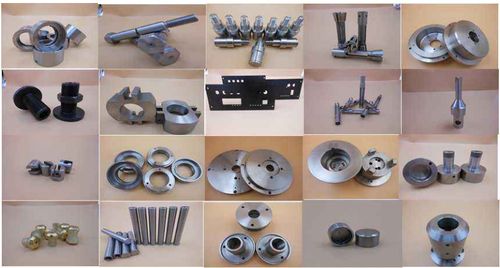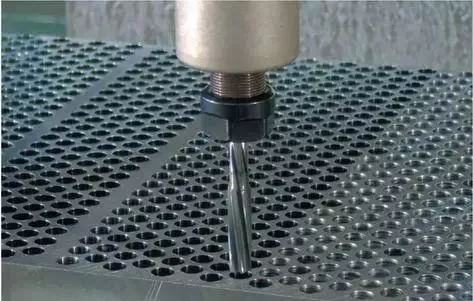
Answer: The parts processed by turning mainly include shaft – type parts (such as motor shafts, lead screws), disk – sleeve – type parts (like gear blanks, bearing sleeves), special rotating – body – type parts (such as camshafts, eccentric shafts), as well as threaded parts and spherical parts. They are widely used in scenarios such as mechanical transmission and positioning support.
Professional Extension
I. In – depth Analysis of Part Types
Shaft – type parts are typical representatives of turning processing. Take the motor shaft as an example. Through turning, the outer – diameter of the shaft can be precisely controlled to ensure its adaptability to the bearing. At the same time, the cylindricity is guaranteed, enabling the shaft to remain stable during high – speed rotation. For lead screws, turning can machine high – precision threads to achieve accurate linear – motion conversion. Among disk – sleeve – type parts, when turning a gear blank, the co – axiality of the inner hole and the outer circle needs to be strictly ensured, laying the foundation for subsequent gear processing. For a bearing sleeve, the surface roughness of the inner hole needs to be ensured through turning to reduce friction during bearing operation. The turning of special rotating – body parts is quite challenging. For a camshaft, according to its complex contour curve, the programming function of a CNC lathe is used to achieve precise processing. For an eccentric shaft, a special fixture is required to adjust the rotation center of the workpiece in order to machine a qualified eccentric structure.
II. Material Compatibility and Processing Key Points
Metallic materials play a dominant role in turning processing. Steel materials have different turning performances depending on their carbon content. Medium – carbon steel has moderate hardness, and tool wear is relatively slow. High – carbon steel has a higher hardness, so high – performance tools need to be selected, and cutting parameters should be adjusted reasonably. Due to the presence of graphite structure inside cast – iron materials, they produce discontinuous chips during cutting. Wear – resistant tools are required, and chip – breaking treatment should be noted. Aluminum alloys are soft with low cutting heat, but they are prone to built – up edges, affecting the surface quality. Therefore, high – speed cutting should be adopted, and appropriate cutting fluid should be used. When turning non – metallic materials, thermoplastic plastics such as nylon are sensitive to temperature. Cutting heat can easily cause the material to soften and deform. A processing method with small cutting amounts and large feeds should be adopted, and cooling should be strengthened. Engineering plastics such as polytetrafluoroethylene have low – friction characteristics. During turning, measures should be taken to prevent the parts from slipping in the fixture. Special clamping methods can be used to ensure accurate positioning.
III. Classification of Machining Precision and Application Differences
The machining precision of turning directly determines the application fields of parts. High – precision parts are often used in high – end fields such as aerospace and precision instruments. The shaft of an aircraft engine has extremely high requirements for dimensional accuracy and surface quality. After turning, processes such as grinding and polishing are required to control the surface roughness below Ra0.1μm and the dimensional tolerance at the level of ±0.001mm to meet the high – speed and high – load working requirements of the engine. General – precision parts are widely used in ordinary mechanical equipment. For example, the transmission shaft of an ordinary machine tool only needs to control the dimensional tolerance within ±0.05mm and the surface roughness at Ra6.3μm, which can meet the usage requirements through processing on an ordinary lathe. At the same time, machining precision is closely related to processing equipment and process methods. CNC lathes, with their high – precision control systems, can achieve high – precision processing of complex parts, while ordinary lathes are more suitable for the production of general – precision and small – batch parts.
The above elaborates on turning – processed parts in detail from multiple aspects. If you have any questions about a certain part or want to know other relevant content, please feel free to communicate with me at any time.





